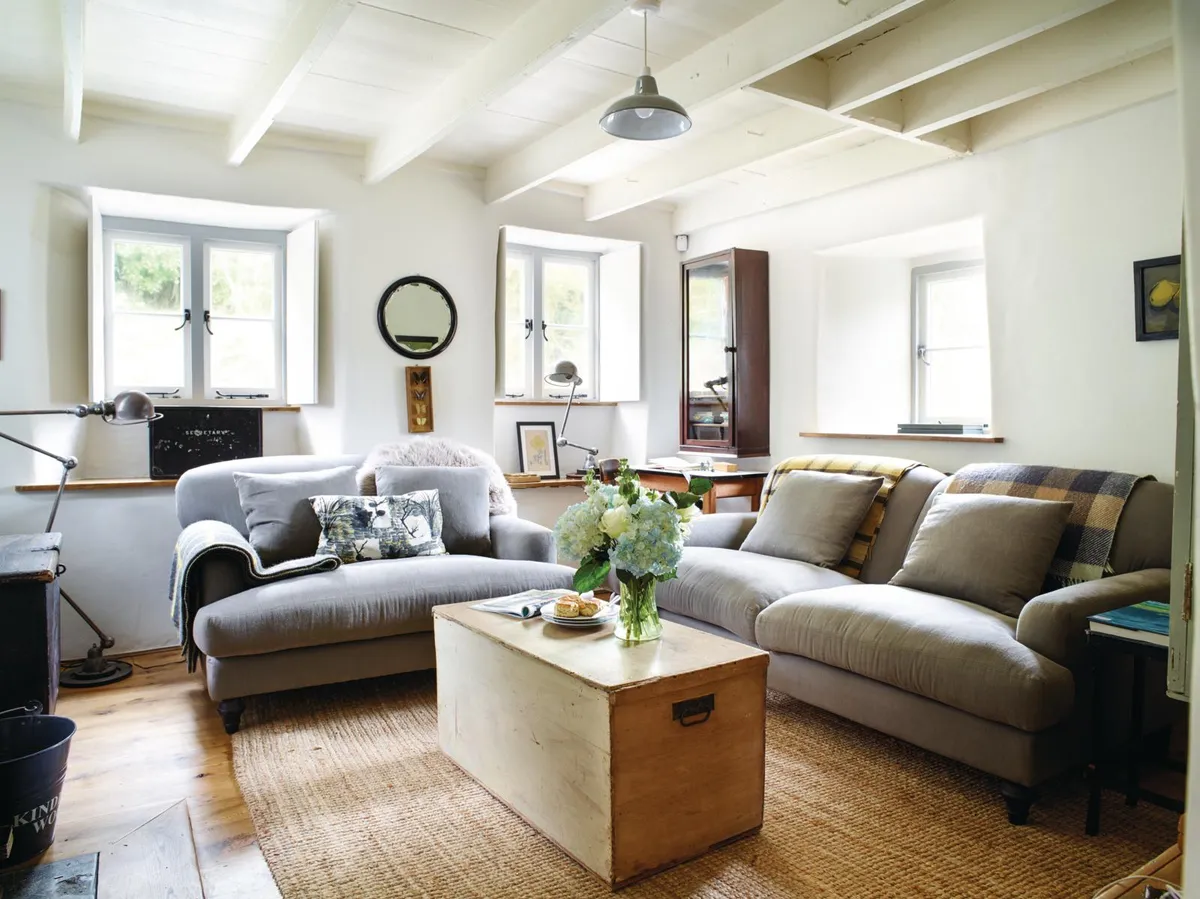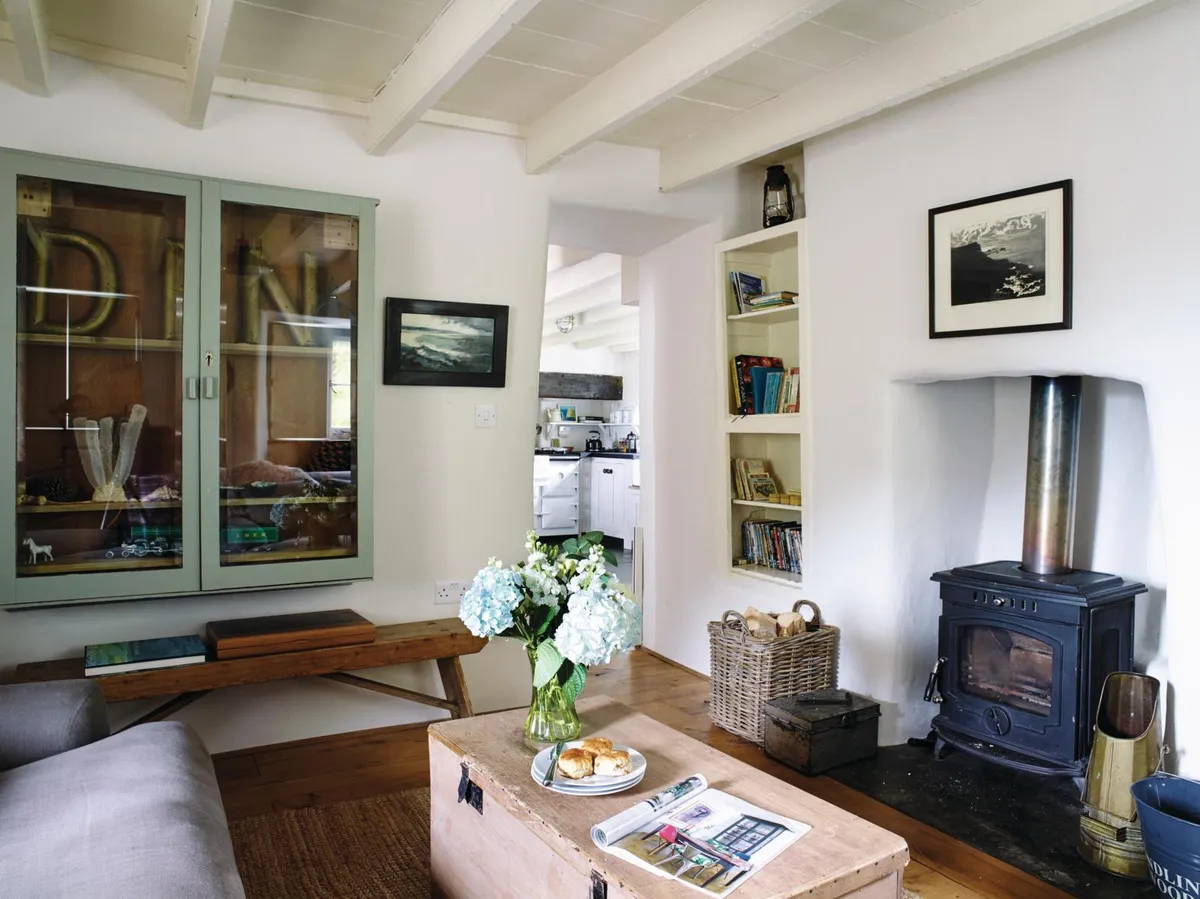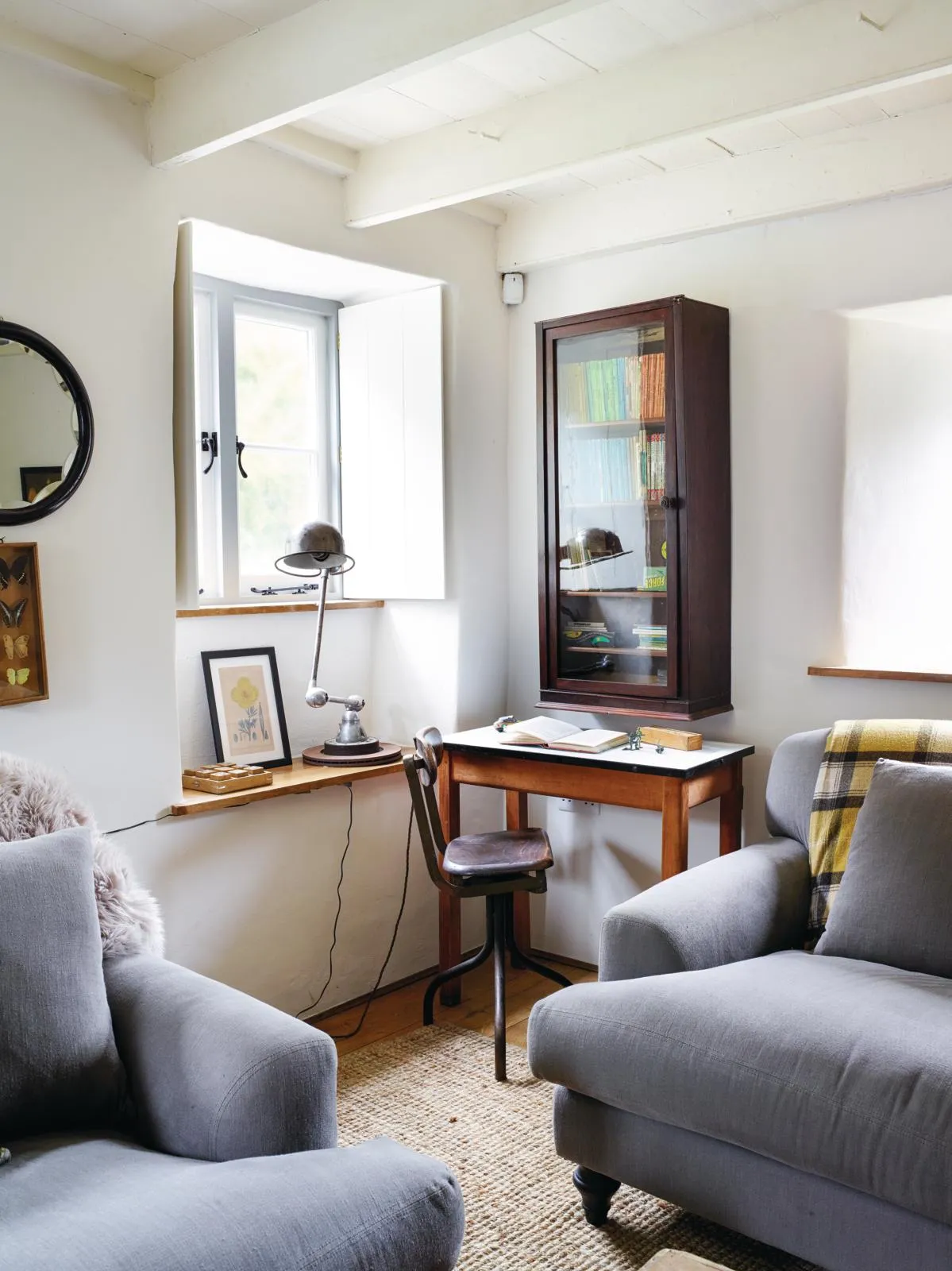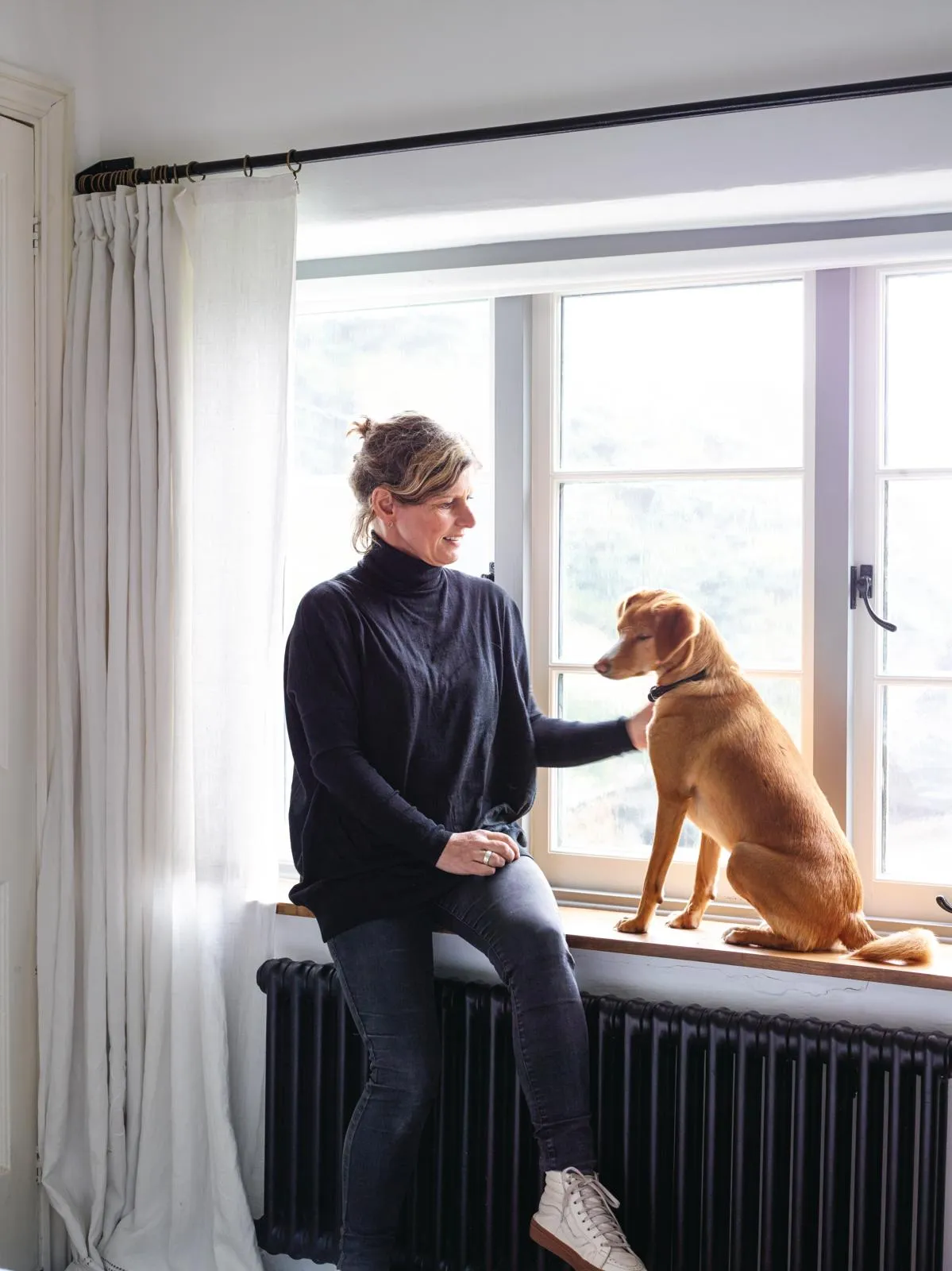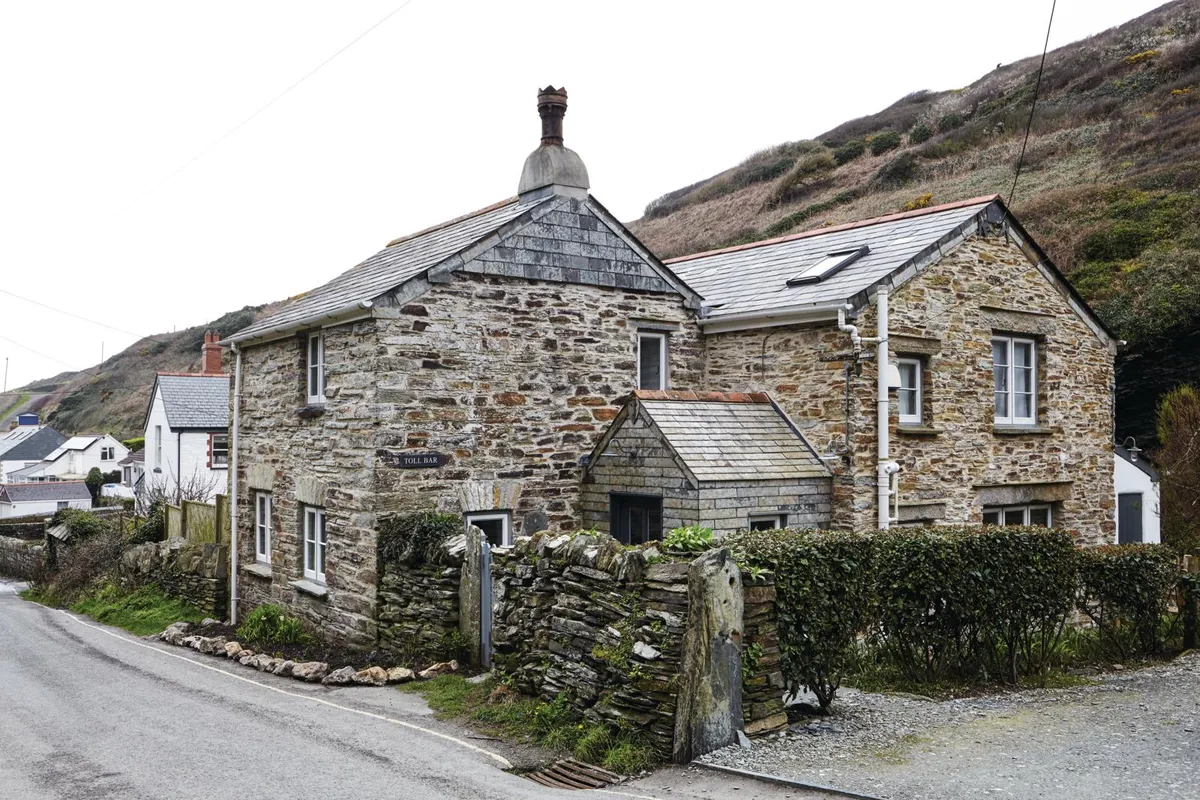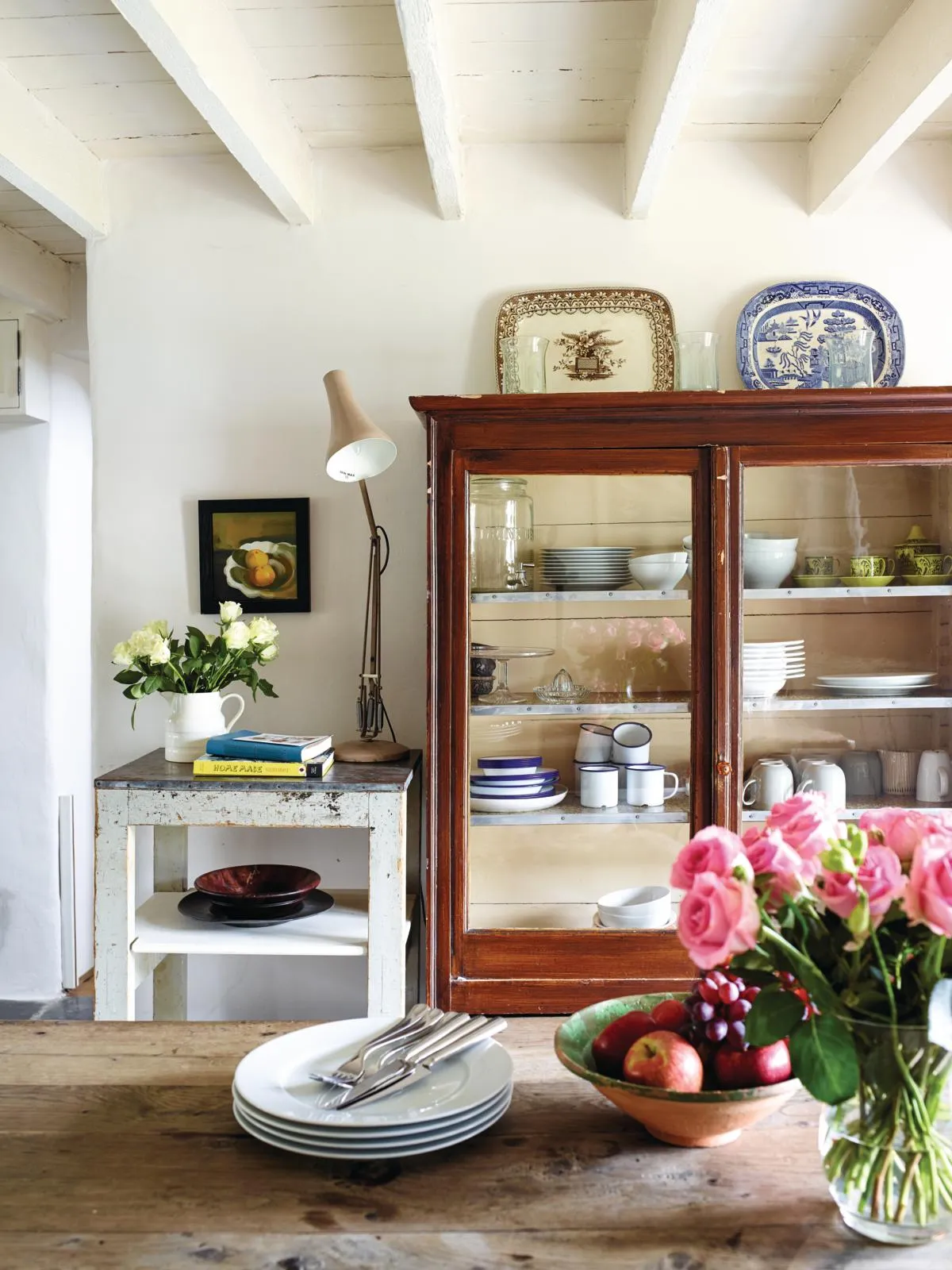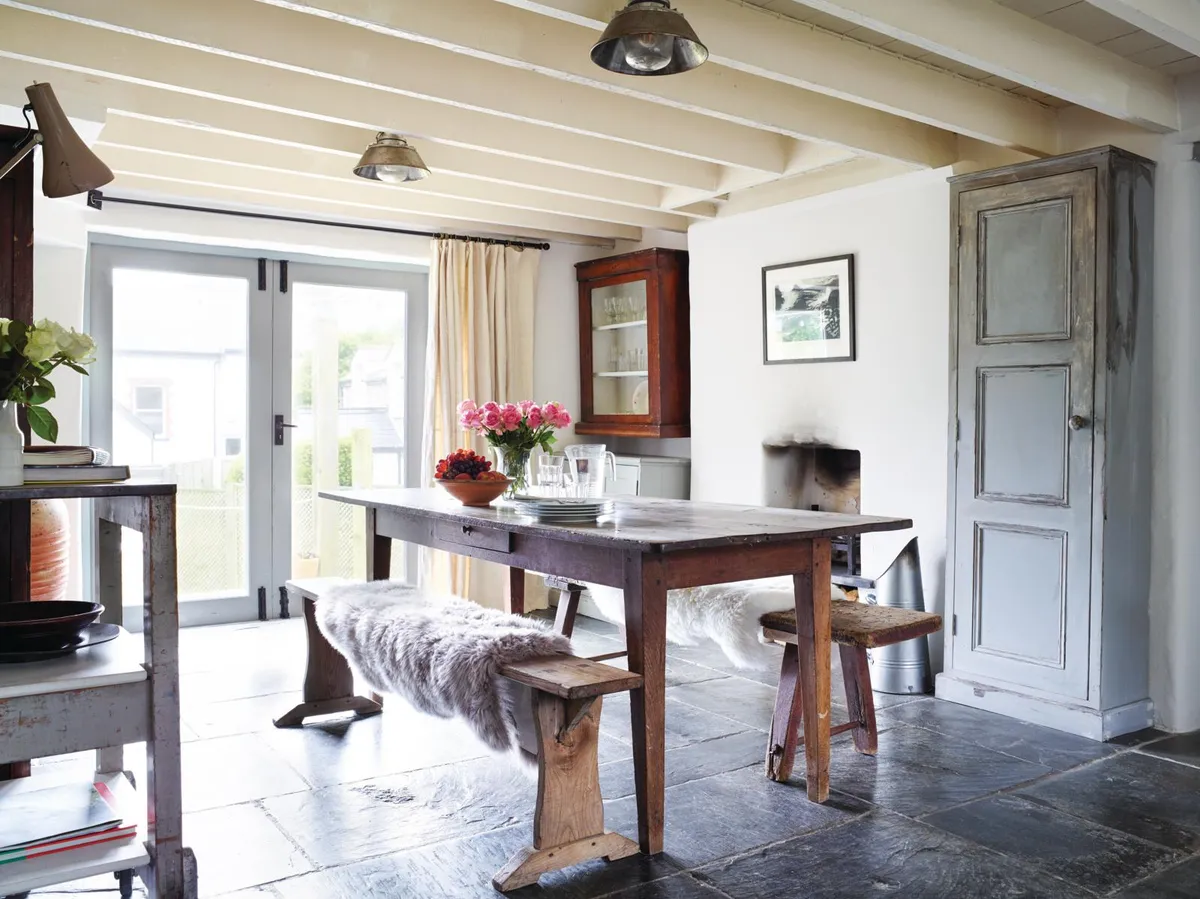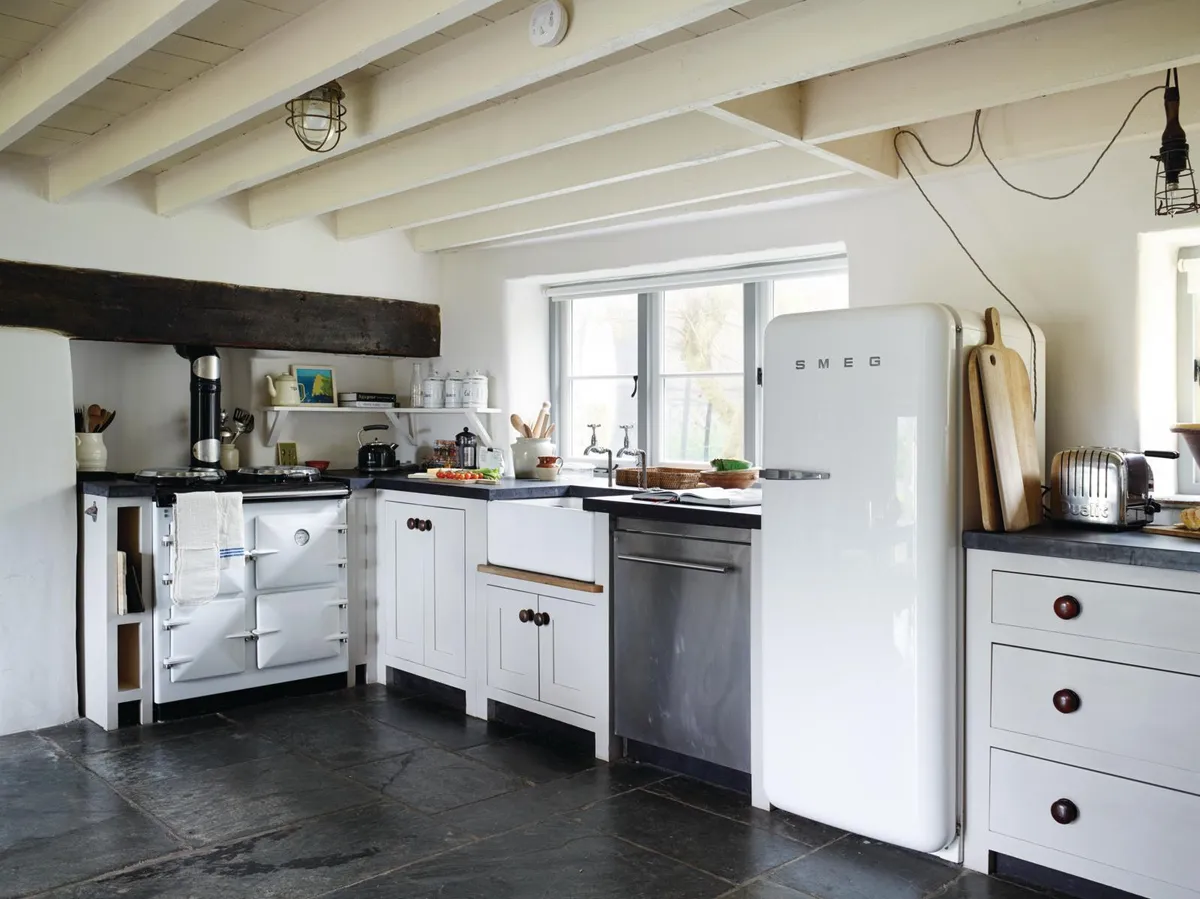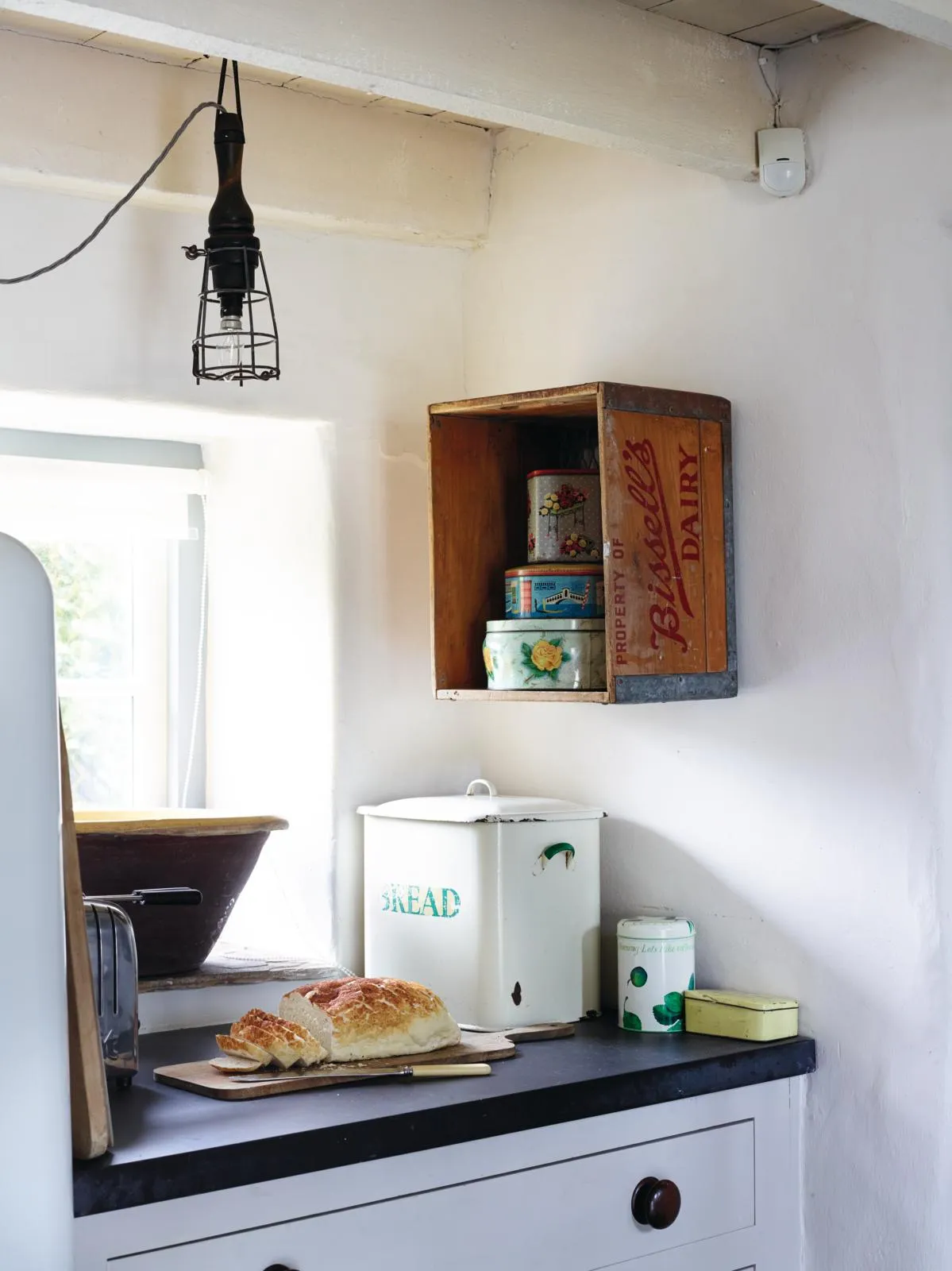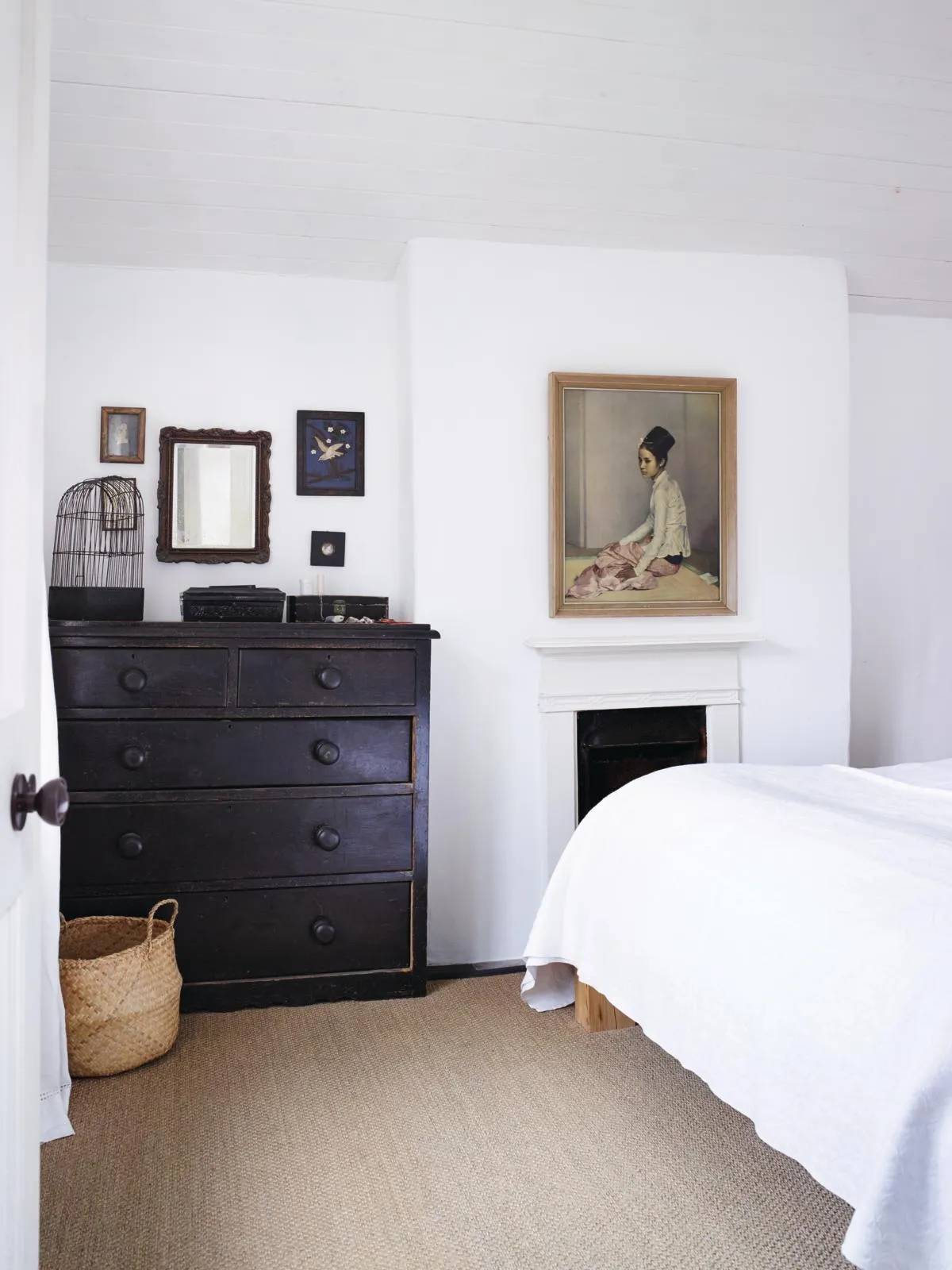Vintage and industrial furniture were the natural choices for Sylvie Morris when it came to furnishing her Cornish cottage. ‘When I was young, my grandmother used to take me around charity and bric-a-brac shops,’ she says, adding that vintage style not only suits her aesthetic, but also the character of the house. ‘Its core dates from the 1600s, but the additions are Victorian, which was when it became a toll house for quarrying slate and sand from the beach at the end of the lane.’
Sylvie wanted the interior to reflect the different phases of the building’s history and so she took her time searching for exactly the right furniture and accessories. Her thoughtful use of vintage and industrial pieces has resulted in a style that subtly references the origins of their cottage without it feeling ‘themed’.
Victorian glass-fronted cabinets, used for both display and storage, are a nod to alterations made during the 1800s, while the zinc-topped table, metal machinist’s chair and factory-style desk lamps add a more industrial edge that chimes with the property’s working past.
Sylvie and her husband Grant are both from Bristol and have a number of favourite antiques dealers and interiors shops in the city. Gloucester Road in particular is one of Sylvie’s favourite haunts: ‘You know you’ll always find something interesting in the shops there,’ she says. ‘It’s full of dealers who pick up pieces they love and are intrigued by. That’s what motivates them, rather than looking out for what will make the biggest profit.’
When it came to the actual renovation of the cottage, the couple took their cues from the building itself. ‘I’d project managed several house renovations in Bristol, but all of them were more straightforward Victorian or Edwardian townhouses,’ Sylvie says. ‘Here, the building methods that I was familiar with were suddenly irrelevant. This cottage set its own Cornish rules and we had to learn them.’ Like many cottages in the area, the house was built using a technique similar to making dry stone walls: its core created from rocks and lime mortar.
There was a lot of work to do before Sylvie and her family could move in, including reroofing, replacing the windows and laying new flooring in some areas. For the kitchen, Sylvie sourced old slate, which felt apt given the property’s former life as a toll house for the local quarry.
Fireplaces were stripped back to their original simple openings and authentically wonky walls were retained and re-limed. ‘We love how it’s all a bit wiggly and uneven; even the fireplace has a kink,’ says Sylvie. ‘It shows that rough stone, which can’t be controlled or smoothed out, lies at the heart of the house.’
Apart from the mattresses and sofas, most things in the cottage are vintage or antique. The kitchen table came from France, with extra inches added to the legs so that Sylvie’s husband, who is well over six feet tall, could fit his legs underneath. ‘Clearly he’s a fair bit taller than your average 19th-century farmer,’ she laughs. An old trunk doubles as a coffee table and a pig bench works as a side table: ‘It’s been patched up with pieces of lead over the years – it’s definitely got character,’ says Sylvie.
Built-in joinery by Cornish carpenters features detailing and joints that are in-keeping with the older furniture, as well as the age of the property. In the bathroom, more slate from one of the few working local quarries is set into the rendered wall as a splashback. ‘It has a lovely texture,’ Sylvie adds.
To decorate the newly shored-up walls, Sylvie added items bought at antiques and collectors’ fairs, but was careful not to overload each space. ‘I love finding pieces that feel special, but I don’t accumulate for the sake of it,’ she says. Much of the art is personal, with several paintings and etchings by Sylvie’s father, David Morris, and her sister Jane Kell, both established artists.
Sylvie likes lighting with an industrial, working character such as vintage Anglepoise and Jielde lamps, which are dotted around the house. Elsewhere, she has also added metal shades and task lighting in that vein. ‘Industrial lights have become more popular lately, but I’ve loved this style since I saw dealers bringing back Czech factory pendants and ship’s hull lighting a good 10 years ago,’ she says.
While she’s always on the lookout for items that would work in the cottage, Sylvie trusts her instincts for what will suit these spaces. ‘It’s not my style to slavishly follow what’s deemed popular right now – be it industrial furniture or floral prints. For me, it’s more about what catches my eye and whether it will look right in our home.’
